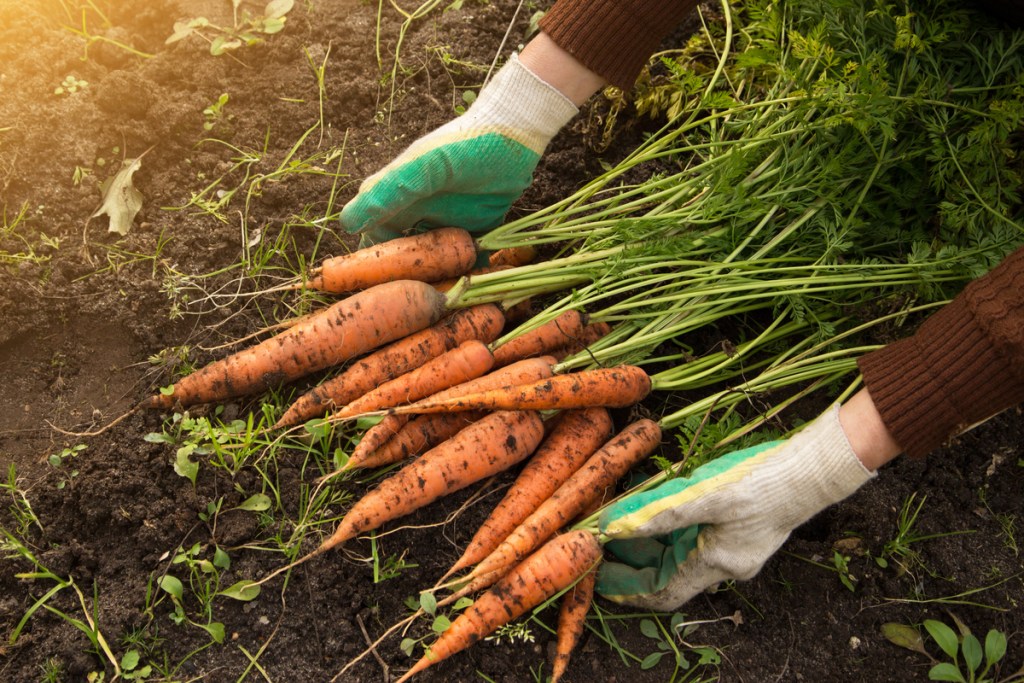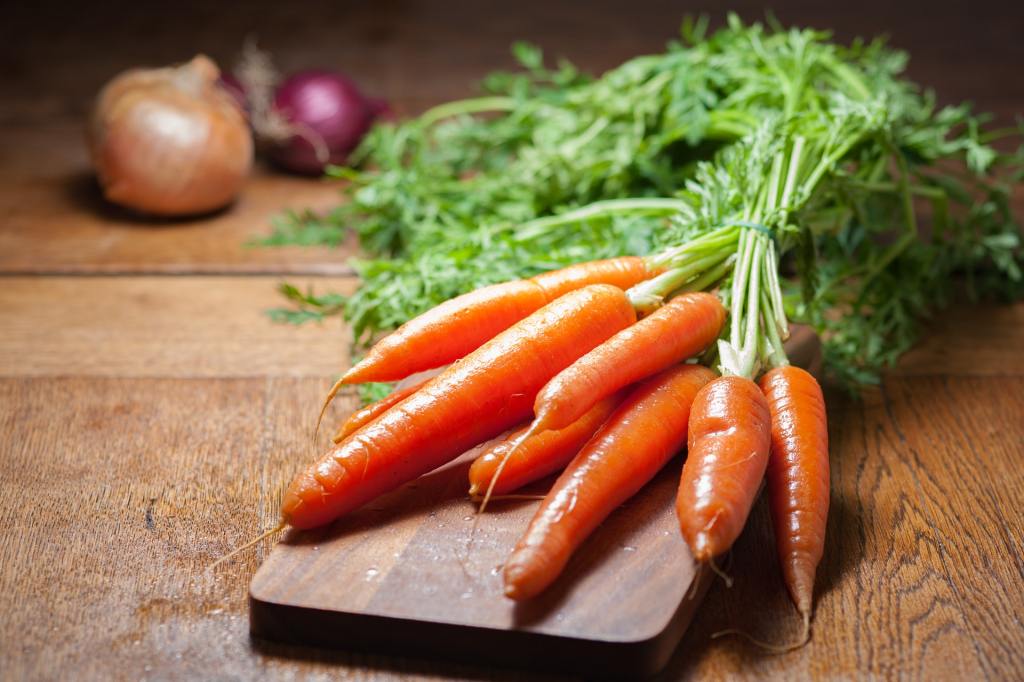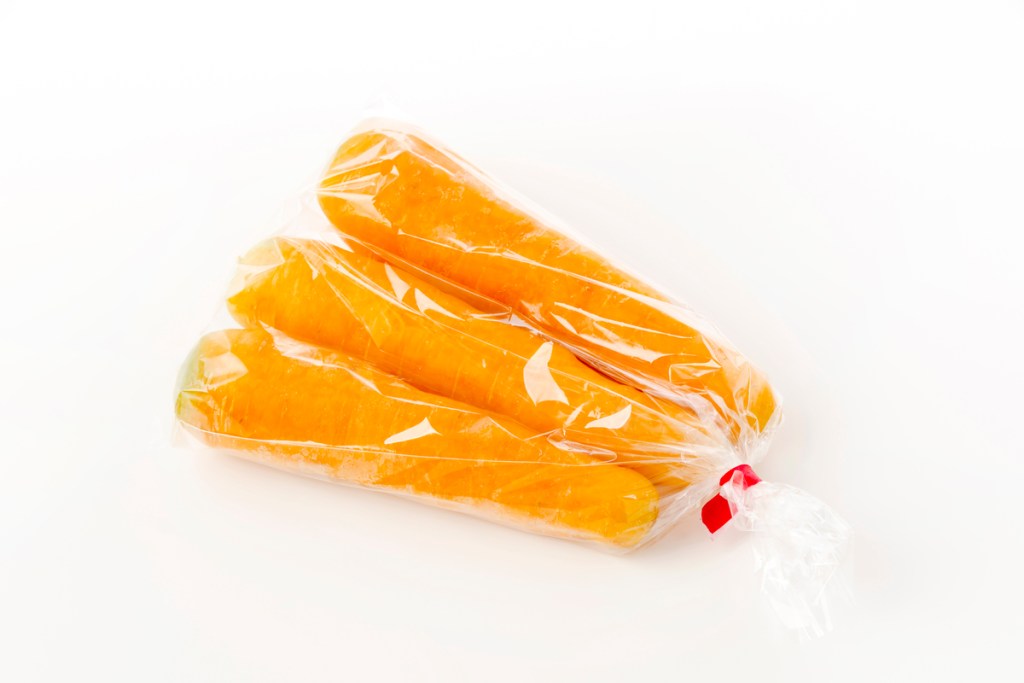Garden fresh carrots are delicious raw or cooked. Although carrots that are grown for early season harvest do not store as well, with late season carrots the flavor can continue to improve for the first few weeks in storage. To enjoy the best flavor and storage abilities, you’ll need to follow best practices in both harvesting and storing carrots.
Carrots store best if they fully mature in the garden
It is best to time the planting of carrots that you intend to store so they can fully mature in terms of growth and flavor before harvest. Here's how to time your carrot harvest:
Step 1: Check the “days to harvest” noted on the seed packet. That is the minimum number of days they will need to grow before the average first frost date in fall.
Step 2: Add seven to ten days to the total, to be sure they have enough time in the case of an early frost.
Step 3: Count down the number of days to harvest to the day you should test a few carrots. For example, if you plant on June 15, and the packet says 70 days to harvest, pull your first test carrots on Aug. 24.
Step 4: Look for carrots that are well-shaped, and have good color and taste. Carrots that match this are ready to harvest, while underdeveloped carrots may need another couple days or weeks.

How to harvest carrots
When the carrots are ready to harvest, here's what to do:
Step 1: Loosen the soil along the row by inserting a garden fork straight down into the soil, a few inches away from where the shoulders of the carrots emerge.
Step 2: Gently rock the garden fork backward to lift the carrots out of the soil.
Step 3: Pull them up individually by their tops.
Step 4: Brush off the loose, clumpy soil.
Step 5: Remove the tops as soon as possible after harvest to minimize transpiration.
Step 6: Keep the roots out of the hot sun as you continue harvesting.

Carrots may be stored in different ways
There are several effective ways to store carrots and keep them fresh. For extended storage, they may be left in the ground for several months during cool fall and winter weather. Before a deep freeze sets in, carrots left in the ground should be insulated with dry leaves or straw and then covered with plastic.
Another good long-term storage option is to dig them, remove the tops, and store them in a cool, dark location in large crates or boxes packed with clean, moist sand. Carrots that will be used within a month or so should be stored in the refrigerator.
Carrots will stay fresh in a plastic bag for a few days
If you plan to use them the next day or so, simply clean and store the carrots in a plastic bag. But beware their neighbors. Some fruits and veggies give off ethylene gas, which imparts a bitter flavor in carrots. The main ones you’ll likely have in the refrigerator would be apples or pears. Don’t worry, if you place the fruits in the crisper you can leave the bagged carrots on a shelf.

Storing carrots in water keeps them fresh for up to a month
When carrots go soft or rubbery, it means they have not been stored properly. In high humidity and cool temperatures, as you would typically find in your refrigerator veggie drawer, carrots should stay fresh and crisp for a month or longer. But sometimes even that doesn’t work as well as it should. A great way to ensure that they keep their crunchiness as long as possible is by storing carrots in water. Here's how:
Step 1: Clean the carrots by removing the tops and wash them.
Step 2: Store the tops separately.
Step 3: Place the carrots into a watertight storage container, either vertically or horizontally, and cover them with cold tap water.
Step 4: Put a lid on the container and store it in the refrigerator for up to a month, changing the water twice a week.
Carrots are one of the most versatile vegetables in the kitchen. They are easy to grow in the garden, and taste great as an essential ingredient in a diversity of recipes. If you have an abundance of carrots, handle them properly and you will be able to enjoy the fresh, crunchy flavor for months.
Editors' Recommendations
- Growing your own vanilla plant doesn’t need to be difficult: Here’s what you need to know
- 3 incredible reasons why you should be using coffee grounds in your garden
- Have a gross mealybug infestation on your plants? Try one of these remedies
- The truth about holly leaves – interesting facts you might not know
- Add these plants to your garden to provide winter food for your local birds




